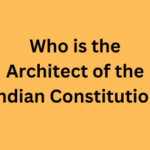Kesavananda Bharati Case and Basic Structure Of Constitution: Basics Explained

the Supreme Court, on April 24, 1973, delivered its judgment in Kesavananda Bharati Sripadagalvaru and Ors vs State of Kerala , the landmark case that redefined the relationship between Parliament and the Constitution. A 13-judge Constitution Bench of the Supreme Court ruled that the “basic structure” of the Constitution is inviolable, and cannot be amended by Parliament.
LEARNING FROM HOME/ WITHOUT CLASSES / BASICS
According to the Indian Constitution, Parliament and the state legislatures have the power to make laws within their respective jurisdictions. This power is not absolute in nature.
The Constitution vests in the judiciary, the power to adjudicate upon the constitutional validity of all laws. If a law made by Parliament or the state legislatures violates any provision of the Constitution, the Supreme Court has the power to declare such a law invalid or ultra vires.
Article 368 invested Parliament with the power to amend the Constitution. With the intention of preserving the original ideals envisioned by the constitution-makers, the apex court pronounced that Parliament could not distort, damage or alter the basic features of the Constitution under the pretext of amending it.
The phrase ‘basic structure’ itself cannot be found in the Constitution. The Supreme Court recognised this concept for the first time in the historic Kesavananda Bharati case in 1973.
13-judge bench pronounced that while Parliament had “wide” powers, it cannot alter the basic structure of the Constitution; . all laws and constitutional amendments are now subject to judicial review and laws that transgress the basic structure are likely to be struck down by the Supreme Court. In essence Parliament’s power to amend the Constitution is not absolute and the Supreme Court is the final arbiter over and interpreter of all constitutional amendments.
As regards the Basic Structure, the court held that it would be decided case by case. The ‘basic structure’ doctrine has since been interpreted to include the supremacy of the Constitution, the rule of law, Independence of the judiciary, doctrine of separation of powers, federalism, secularism, sovereign democratic republic, the parliamentary system of government, the principle of free and fair elections, welfare state, etc.
Critics of the doctrine have called it undemocratic, since unelected judges can strike down a constitutional amendment. At the same time, its proponents have hailed the concept as a safety valve against majoritarianism and authoritarianism.





0 Comments